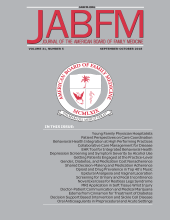Abstract
Purpose: Multiple trials in the past have shown conflicting results of whether cinnamon lowers glucose or hemoglobin A1C (HbA1C). The purpose of this study was to determine whether cinnamon lowers HbA1C in patients with type 2 diabetes. I performed a randomized, controlled trial to evaluate whether daily cinnamon plus usual care versus usual care alone lowers HbA1c.
Methods: I randomized 109 type 2 diabetics (HbA1C >7.0) from 3 primary care clinics caring for pediatric, adult, and geriatric patients at a United States military base. Participants were randomly allocated to either usual care with management changes by their primary care physician or usual care with management changes plus cinnamon capsules, 1g daily for 90 days. HbA1c was drawn at baseline and 90 days and compared with intention-to-treat analysis. This study was approved by an institutional review board.
Results: Cinnamon lowered HbA1C 0.83% (95% CI, 0.46–1.20) compared with usual care alone lowering HbA1C 0.37% (95% CI, 0.15–0.59).
Conclusions: Taking cinnamon could be useful for lowering serum HbA1C in type 2 diabetics with HbA1C >7.0 in addition to usual care.






